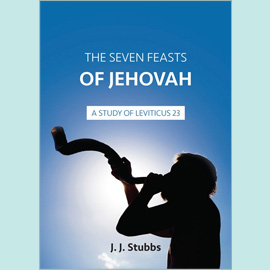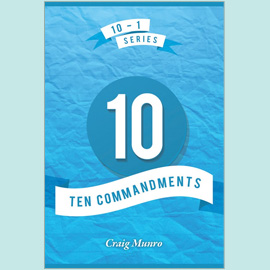Introductory
It is very interesting to examine the circumstances in which people met the Saviour and received blessing from Him. In this study we shall, for the sake of simplicity, concentrate on Matthew’s account, so all chapter and verse references are to Matthew’s Gospel. We shall find that there is great variety in the circumstances in which they met the Lord, yet there are features which recur frequently in the incidents. In some the people in need of His gracious help seemed to make the first move in approaching Him, in others they seemed just to be in the place where He is walking, while in still others it is clear that He sought them out. In all the incidents there was some kind of interaction between the Saviour and those whom He helped, or between the Saviour and those who sought His help on behalf of their friends. We shall take a sample of incidents and draw some lessons from them.
Some Sought His Help For Themselves
In 8.2-4 a leper came and bowed before Him with the plea, "Lord, if thou wilt, thou canst make me clean". Without any delay the Lord "put forth his hand, and touched him, saying I will; be thou clean". This is the simplest kind of encounter recorded. A person feels his need, approaches the Saviour with a clear knowledge of what his need is - in this case he needs cleansing - confesses (or at least implies) what his need is, shows his confidence that the Saviour can meet his need, and receives the blessing which he seeks. If we can apply this story to an evangelistic setting, people have a need of salvation, forgiveness, and cleansing (not just happiness), and only Christ can meet the need. But if they come in simple confidence to Him He responds.
In 9.27-31 two blind men "followed him" as He passed by. Their cry was, "Thou Son of David, have mercy on us". It was evidence of their confidence in His willingness to help them. It was also an indication of their willingness to ascribe to Him royal, maybe even Messianic, dignity. The Saviour asked them to confirm their faith in His ability to give the help for which they asked. Their need drove them to cry to Him for help, and He responded with the words, "According to your faith be it unto you". Once again, the features are clear: a sense of specific need, an urgent appeal to Christ, an acknowledgment of His ability to meet the need, and a ready response by the Saviour.
In 20.29-34 another two blind men were blessed as He "passed by". Their cry was, "Have mercy on us, O Lord, thou Son of David". The crowd interfered, but they persisted in their cry. "And Jesus stood still, and called them, and said, What will ye that I shall do unto you? They say unto him, Lord, that our eyes may be opened." Again, there is the prominent feature of their sense of a specific need and their implicit confidence in the Saviour’s ability to help; and they are marked by an additional quality of determination in the face of discouragements. Urgency is apt in this case, for He would not pass this way again, though they did not know that. At first it seemed as if He were simply passing on, but the dismissive attempts of the crowd to silence them serve as a vivid contrast to the Saviour’s willingness to give time to their appeal. "And Jesus stood still" - He still has time to respond to the urgent appeal of a needy sinner. His willingness is never in question.
Some Sought Help For Friends
In 8.5-13 we have the story of the centurion who came to Christ on behalf of his valued servant who was sick. There was an immediate response: "I will come and heal him". Then the story takes an interesting twist, for the centurion protested his unworthiness that the Lord should come under his roof. He appealed to Him for a "distance" healing, by the authority of His word. Delighted by the man’s faith, the Lord said, "Go thy way; as thou hast believed, so be it done unto thee". The Saviour delights not only to respond to the cry of the needy but also to respond to the cry of the friends of the needy. This encourages us to keep praying for those dear to us who are in need.
Verses 16-17 of the same chapter bring a similar encouragement to us. People brought to Him friends who had physical or spiritual needs - sickness or demon-oppression. Matthew sees this as an illustration of Isaiah 53.4: "Himself took our infirmities, and bare our sicknesses". It was the faith of the friends which brought the needy in touch with the power of the Saviour.
Chapter 9.1-8 presents us with an interesting case. Initially it is a simple matter of believing friends bringing a paralysed man for healing. Matthew’s record says that it was when He saw "their faith" that the Lord said, "Thy sins be forgiven thee". Presumably, since forgiveness of sins was involved, the faith of the friends was shared by the man himself, for their faith could hardly bring forgiveness of the paralytic’s sins. Central to the story is the fact that the Lord deliberately raised the question of His divine authority to forgive sins. Then, to show that the word of forgiveness was not a fiction, He said, "Arise, take up thy bed, and go unto thine house". This showed His authority in a way that was visible and unquestionable. It is important that the Lord stamps His divine authority on the healing; it is an act of compassion, but it is also, and essentially, a declaration of sovereign power. He was a real man on earth, but He was nothing less than He had always been, the eternal Son of God, with all the authority of heaven while living on earth. This is surely the point of the expression in v.6, "hath power (authority) on earth".
Under this heading must come the pair of stories which are interwoven in 9.18-26. The narrative starts with the approach made by Jairus on behalf of his little daughter who was at the point of death. His request as he knelt before the Saviour was, "Come and lay thy hand upon her, and she shall live". The Saviour responded by following him. However, as they went there was an interruption, for a woman with a long-standing discharge of blood came urgently through the throng and touched the border of His garment. She had reasoned within herself with the reasoning of faith that, if she could but touch His garment, she would be healed. She was healed and was reassured by the public statement of the Lord, "Thy faith hath made thee whole". The other story is then resumed with the arrival at Jairus’ house, and the Saviour’s word of reassurance that the little girl was only asleep. Then He took her by the hand, spoke to her, raised her up, and restored her to her parents. It is vital to see these two stories together, as the Holy Spirit has kept them together. The Saviour’s power is clearly evident; His compassion is expressed; His care to bring the woman’s faith into the open and tell of its importance is a central part of the stories. Equally evident is the woman’s resolute determination to get to the Saviour, her simple confidence in His power to heal. The Saviour’s power to save and the sinner’s urgent readiness to trust Him are both vital aspects in the conversion of any soul. God has joined them together; let us not put them asunder.
To be continued.








